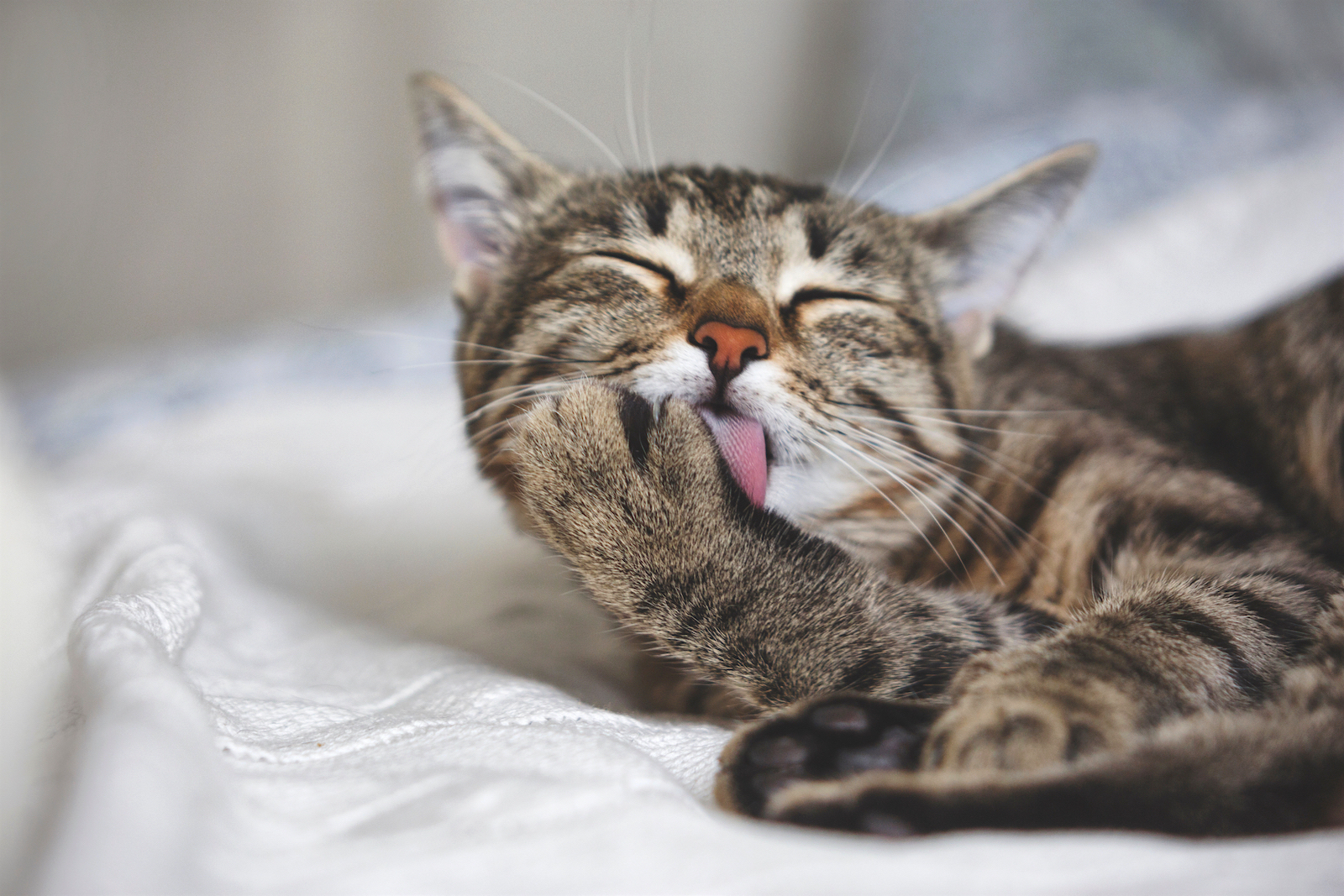Cats love to sleep. Cats love to clean. Your kitty loves to groom him or herself. But their passion for grooming has a downside, which shows up as the dreaded (but manageable) hairball. At first glance, cat hairballs may look like that thing you scoop up in the litter box. However, upon closer inspection, you will notice that they’re actually a sticky bunch of hair and digestive juices. They are disgusting when vomited, especially when you find them spread beyond the sandbox, on the cat litter mat, floor, carpet, or furniture. However, when not extracted, they can become life-threatening. You see, the only recourse for a cat when it accidentally gets fur in its mouth is to swallow. Ingesting a few loose furs is OK since they can easily be coughed up or passed into poops. However, when they accumulate, they become difficult for your cat to manage. Consequently, they form a blockage either in your cat’s throat or stomach.
5 Cat Hairball Symptoms You Should Be Wary Of
When hairballs become a huge mess, your cat will start showing signs of distress. Most notable of them are the following:
• Lethargy—Cats are often called lazy (well, why would you be busy when you have a loyal human servant?). However, simple laziness and lethargy are two very different things. The latter makes the afflicted cat look not just uninterested but sickly.
• Loss of appetite and weight—Some cats are picky, but if your feline pal refuses to eat several meals or days in a row, resulting to weight loss, then there’s definitely something wrong.
• Continuous retching, gagging, and hacking with no hairballs regurgitated— Among common cat hairball symptoms, this is the most confusing since it resembles a popular symptom of feline asthma. Nevertheless, if your cat’s hacking persists without producing hairballs, immediately bring her to the vet.
• Constipation or frequent diarrhea—As a final solution, your cat’s body will try to eliminate the cause of distress through fecal excretion. However, if the hairball has become too big, it will only result in bouts of diarrhea and constipation.
• Swollen belly—As the cat hairball blockage continues to grow, you will be able to notice a lump around your cat’s throat or stomach.
Top 5 Cat Hairball Remedies
Our cats are our babies! We don’t want to see them in pain. If you want to alleviate your cat’s suffering, then you should consider these cat hairball remedies:
• Oil or butter—You can add a bit of oil, butter, or even petroleum jelly to your cat’s diet to help her pass stool.
• Commercial cat hairball treatment—Available mostly in gel and liquid forms, they aid in digestion, passing stool, and, depending on dosage, can act as a strong laxative.
• Surgery—The thought of our cats undertaking surgery is truly frightening! However, it’s our best and perhaps the safest option if the cat hairball blockage has grown into an unimaginable size (think of baseballs).
• Additional fiber and specially-formulated cat food—If the cat hairball symptoms began only recently, then you can easily treat it by adding more fiber to your cat’s diet. This will soften the fur mass and make it easier to excrete. The popular choice for extra cat fiber is the Halloween favorite—pumpkin. Asparagus, oat grass, and cat grass are also good options. Alternatively, you can give your feline pal cat foods specifically created to reduce and treat hairballs.
• Regular grooming and bathing—Finally, the simplest cat hairball treatment is daily grooming. The longer her mane is, the more often you should brush her.
Cat hairballs are yucky and cats relentlessly hacking can be annoying, but don’t ignore them! A quick reaction, vet visit, and simple cat hairball remedies can save your feline buddy’s life.
Source: https://www.easyologypets.com/blogs/news/5-cat-hairball-symptoms

